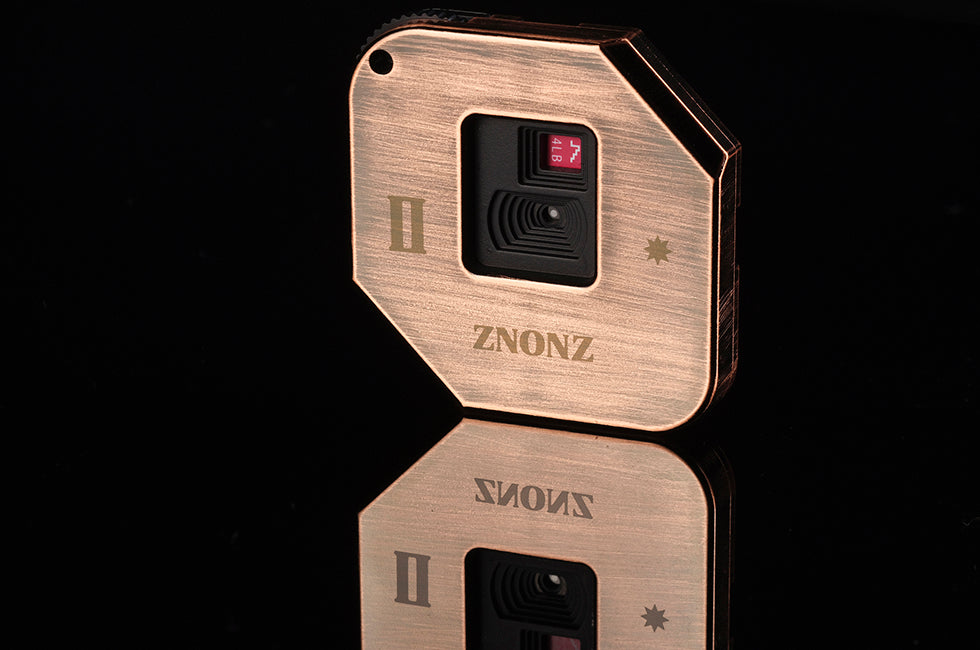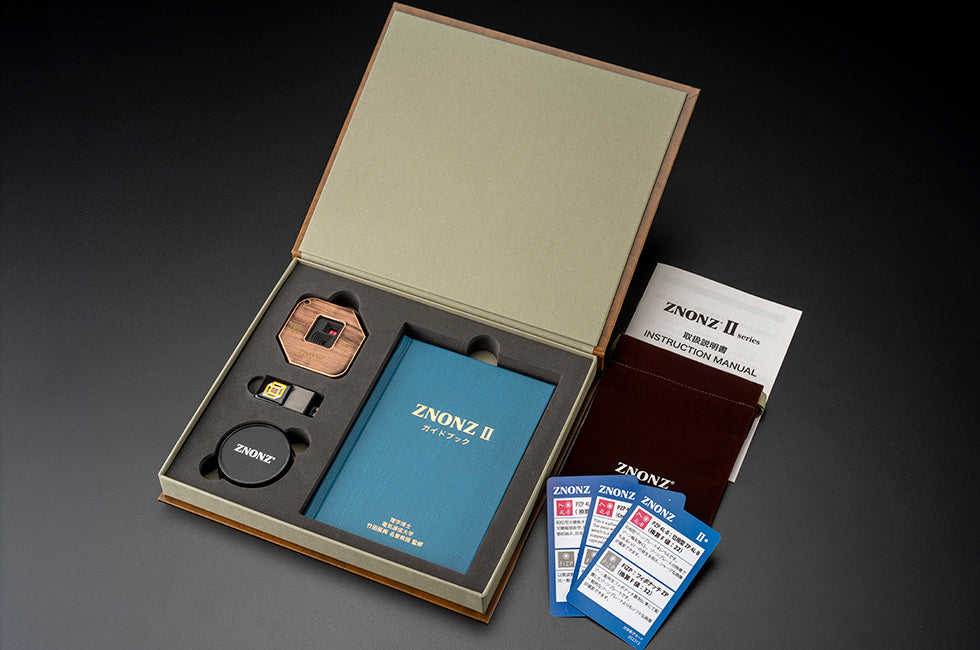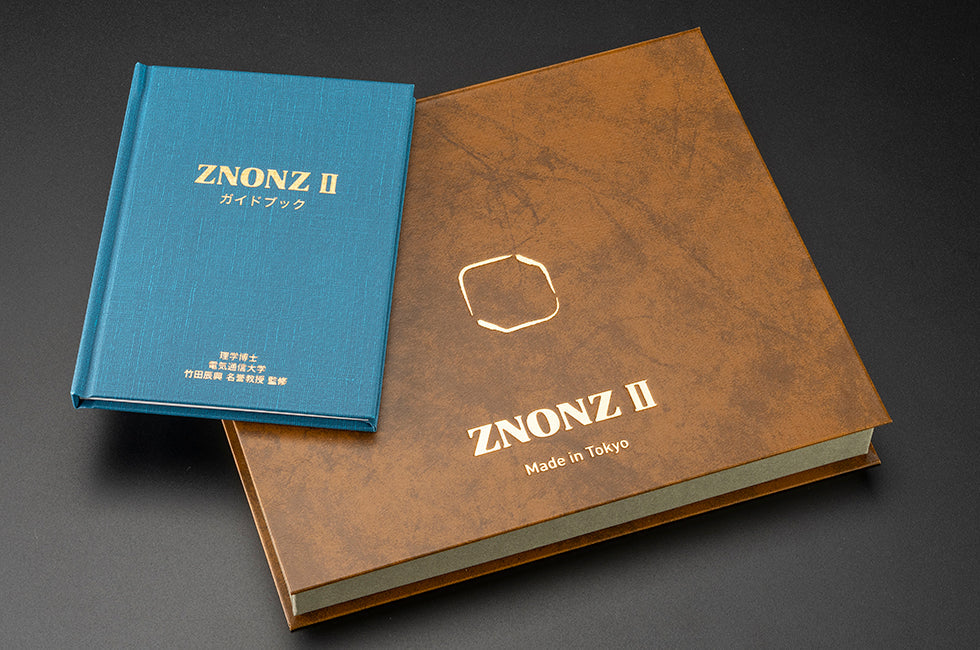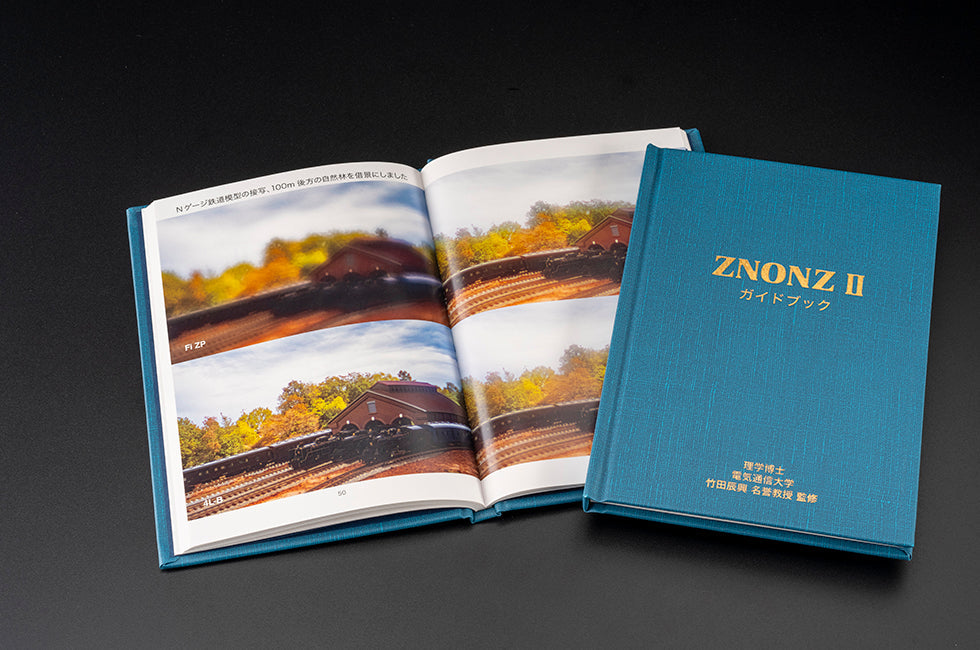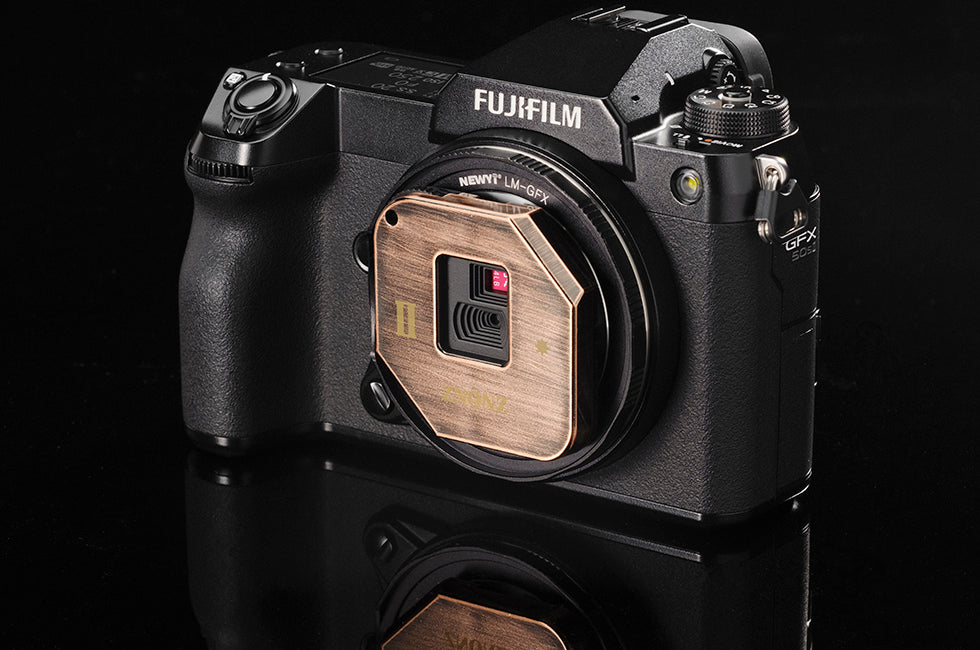ZNONZⅡ (Bronze) Pre-order

- Regular price
- ¥47,800
- Unit price
- per
Couldn't load pickup availability.
明るく高解像度な位相型ゾーンプレート搭載 撮影用光学ツール
ZNONZ II(ズノンII)|明るく・鮮明に・芸術的な描写を楽しむゾーンプレートカメラツール
ZNONZ IIは、従来の「振幅型ゾーンプレート」の魅力を残しながら、より明るく高解像度な撮影を実現する位相型ゾーンプレートを搭載した進化モデルです。
光の回折(かいせつ)を利用し、独特の柔らかい描写や幻想的な光のにじみを生み出します。
本製品は、3種類の位相型ゾーンプレートと、アートなボケ感を楽しめるフィボナッチ・ゾーンプレートの合計4種類を内蔵。
ターレット式のダイヤルを回すだけで、ワンタッチで撮影表現を切り替えることができます。
すべてのプレートはフルサイズ換算で焦点距離約28mm・画角約75度。
従来よりもハローが少なく・コントラストが高い・先鋭な描写を実現し、日中の撮影でもクリアな作品づくりが可能です。
サブミクロン単位の精密加工技術を採用しながら、協力メーカーとの連携により手の届く価格を実現。
カラーはガンメタル調シルバーとアンティーク調ブロンズの2色。
どちらも同じ光学構造を内蔵し、お手持ちのカメラと美しくマッチします。
ZNONZ IIは、光をデザインする新しい撮影ツールとして、
写真表現・アート作品・クリエイティブ撮影に最適な一台です。
ZNONZ Ⅱ に搭載した光学素子
位相型ゾーンプレート4L-Aによる撮影作例。
光の回折を利用しながらも、明るく高い解像度を実現。中心部はシャープに、周辺はやわらかく滲み、被写体全体が穏やかな光に包まれます。
振幅型に比べて明るく透明感のある描写で、自然な階調と立体感を再現。淡いハローが被写体の輪郭をやさしく際立たせ、現実と幻想のあいだを感じさせる表現が可能です。
ZNONZ IIの中でも最もバランスの取れた光学特性で、柔らかさと解像感を両立した一枚が得られます。

位相型ゾーンプレート4L-Bによる撮影作例。
高い透過率と緻密な位相設計により、明るくクリアな描写と柔らかなボケ味を両立。
被写体の輪郭が繊細に際立ちながらも、光がやさしく滲み、自然な立体感と奥行きを感じさせます。
位相型ゾーンプレート4L-Aよりもハローが抑えられ、解像感と空気感のバランスが秀逸。
現実の風景を“詩的なリアリティ”として描き出す、ZNONZ IIシリーズ中でも最も完成度の高いプレートです。

位相型ゾーンプレート2Lによる作例。
光の回折を利用したゾーンプレートならではの柔らかな描写が特徴で、中心部の明瞭なピントと、周辺へ広がる淡いハローが幻想的な空気感を生み出します。
振幅型よりも明るく、解像感も向上。被写体の立体感というよりも、空気と光の存在そのものを描き出すような独特の世界観を楽しめます。

振幅型フィボナッチ・ゾーンプレートによる撮影作例です。
光を部分的に透過させる構造により、被写体の輪郭がやわらかく溶け込み、まるで絵画のような幻想的な雰囲気を描き出します。
位相型に比べて落ち着いたトーンで、陰影の深みや静けさがより際立ち、どこか懐かしいフィルム写真の質感を感じられます。
自然光の中で淡くにじむ光が、現実の風景をやさしく抽象化し、独特の世界観を生み出します。
ZNONZ Ⅰに搭載されたゾーンプレートとはひと味違う、繊細で詩的な描写が楽しめます。

